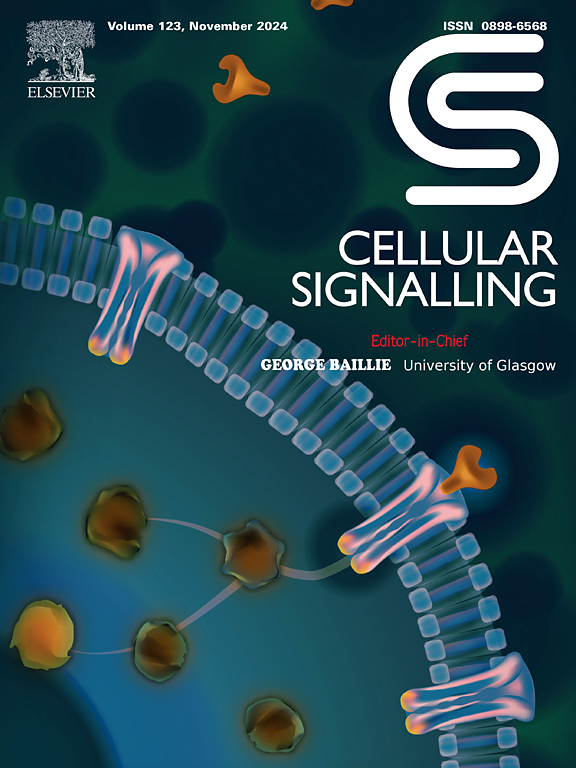Panx3 mediates ferroptosis via the AKT/mTOR signaling pathway in oral squamous cell carcinoma
IF 4.4
2区 生物学
Q2 CELL BIOLOGY
引用次数: 0
Abstract
Pannexin 3 (Panx3) has been the subject of numerous studies across different cell types, predominantly concentrating on bone remodeling, wound repair, and dermal inflammation. However, the link between Panx3 and cancer remains minimally explored. Here, we showed for the first time that the expression of Panx3 was lower in oral squamous cell carcinoma (OSCC) tissues than in normal oral mucosa tissues, and was associated with the differentiation of OSCC. We found that overexpression of Panx3 significantly promotes ferroptosis while inhibiting proliferation, migration, and invasion in SCC15 and CAL27 cells. Furthermore, in Panx3-overexpressing OSCC cells, the expression levels of P-AKT, P-mTOR, GPX4, and SLC7A11 were significantly decreased, whereas ACSL4 expression was markedly upregulated. Subsequently, the enhanced ferroptosis was significantly rescued upon the addition of the AKT activator SC79 to Panx3-overexpressing SCC15 and CAL27 cells. The tumor-suppressive role of Panx3 through ferroptosis induction was further confirmed by xenograft assays, which demonstrated significantly inhibited tumor growth. In conclusion, the results suggested that Panx3 overexpression reduced the survival of OSCC cells and inhibited the progression of OSCC by promoting ferroptosis via the inhibition of AKT/mTOR signaling pathway.
Panx3在口腔鳞状细胞癌中通过AKT/mTOR信号通路介导铁下垂
Pannexin 3 (Panx3)已成为许多不同细胞类型研究的主题,主要集中在骨重塑,伤口修复和皮肤炎症。然而,对Panx3和癌症之间的联系的探索仍然很少。本研究首次发现Panx3在口腔鳞状细胞癌(OSCC)组织中的表达低于正常口腔黏膜组织,并与OSCC的分化有关。我们发现,在SCC15和CAL27细胞中,过表达Panx3显著促进铁下垂,同时抑制增殖、迁移和侵袭。此外,在过表达panx3的OSCC细胞中,P-AKT、P-mTOR、GPX4和SLC7A11的表达水平显著降低,而ACSL4的表达水平显著上调。随后,在panx3过表达的SCC15和CAL27细胞中加入AKT激活剂SC79后,增强的铁下垂明显恢复。通过异种移植实验进一步证实了Panx3通过诱导铁下垂的抑瘤作用,显示出明显抑制肿瘤生长。综上所述,Panx3过表达可能通过抑制AKT/mTOR信号通路促进铁下垂,从而降低OSCC细胞的存活,抑制OSCC的进展。
本文章由计算机程序翻译,如有差异,请以英文原文为准。
求助全文
约1分钟内获得全文
求助全文
来源期刊

Cellular signalling
生物-细胞生物学
CiteScore
8.40
自引率
0.00%
发文量
250
审稿时长
27 days
期刊介绍:
Cellular Signalling publishes original research describing fundamental and clinical findings on the mechanisms, actions and structural components of cellular signalling systems in vitro and in vivo.
Cellular Signalling aims at full length research papers defining signalling systems ranging from microorganisms to cells, tissues and higher organisms.
 求助内容:
求助内容: 应助结果提醒方式:
应助结果提醒方式:


